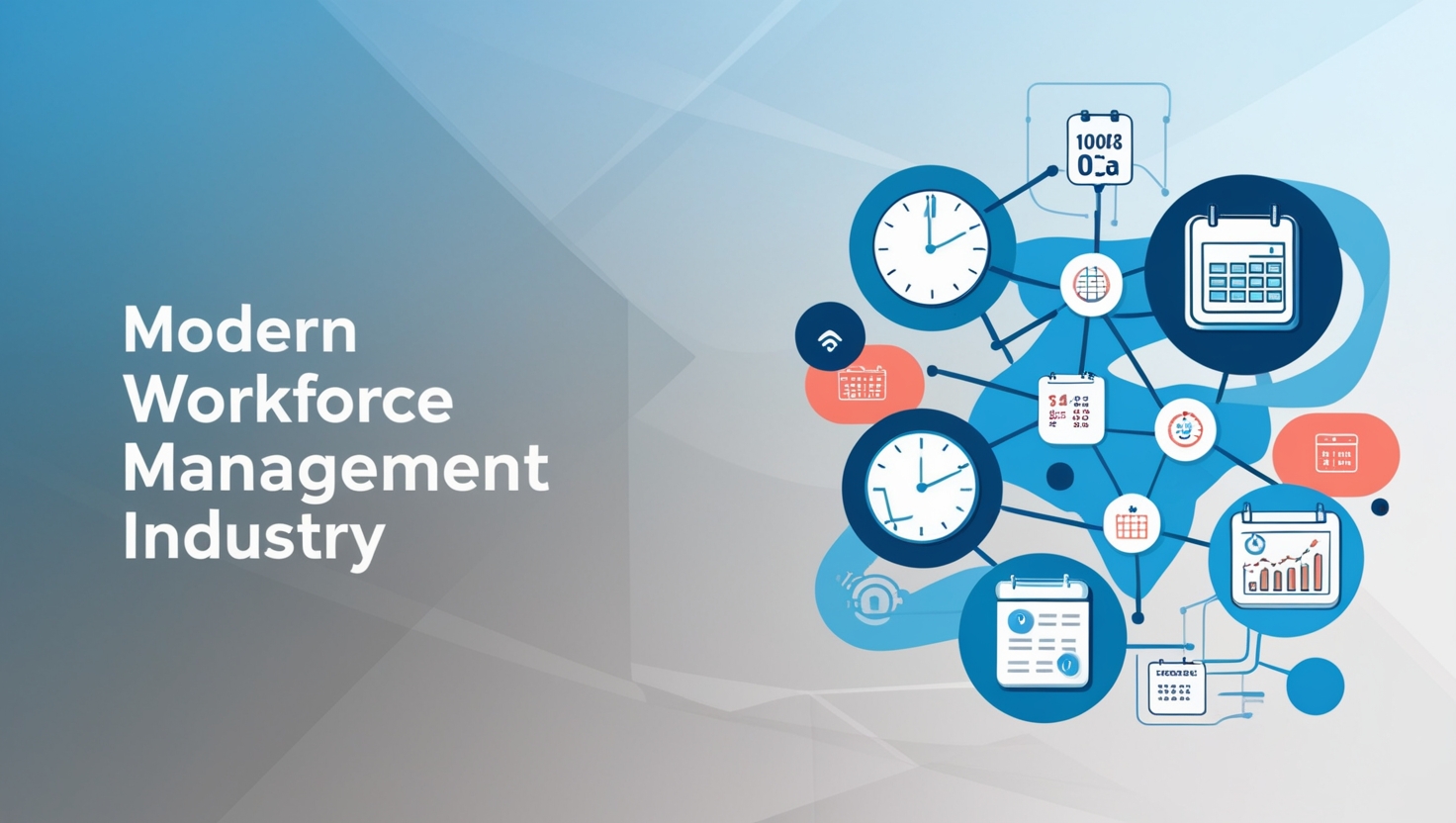
Workforce management (WFM) is witnessing an extraordinary transformation as organizations prepare for the future of work.
By 2025, a mix of technological innovations, employee expectations, and economic shifts will redefine how businesses manage their teams.
Companies must adopt these changes to remain competitive, retain talent, and improve operational efficiency.
This article explores ten major trends shaping the workforce management industry with time and attendance software, equipping organizations with insights to conquer the evolving workplace.
1. AI-Driven Scheduling for Optimized Workforce Management
Artificial intelligence (AI) continues to revolutionize workforce scheduling. AI-powered tools handle complex scheduling tasks with precision, considering employee preferences, skill sets, and compliance requirements.
For example, retail chains can use AI to allocate staff based on real-time demand, ensuring peak hours are covered without overstaffing during slower periods.
AI not only reduces administrative workload but also eliminates human error, creating fairness and improving employee satisfaction. Expect to see predictive scheduling that analyses historical data to anticipate staffing needs, enhancing productivity while reducing labour costs.
2. Hybrid Work Models Are Here to Stay
The pandemic accelerated the adoption of hybrid work models, and this trend will continue to evolve. Employees increasingly value flexibility in how and where they work. Staff management systems are adapting to this shift, offering tools to seamlessly manage both in-office and remote teams.
Organizations will rely on advanced WFM platforms that provide visibility into remote worker productivity, collaboration, and availability. This trend not only enhances work-life balance but also allows companies to access a global talent pool, fostering diversity and innovation.
3. Employee Well-Being Takes Center Stage
Employee well-being is no longer a “nice-to-have” but a business imperative. Companies are recognizing that happy, healthy employees are more productive and loyal. Automation will integrate well-being initiatives, such as mental health support, fitness programs, and personalized workload management.
Moreover, organizations can use data analytics to monitor employee workloads and identify burnout risks, taking proactive steps to address them. Real-time feedback mechanisms will also help managers create a supportive work environment that aligns with employee needs and expectations.
4. Real-Time Workforce Analytics for Smarter Decisions
Data is the new currency in workforce management. In 2025, businesses will increasingly rely on real-time workforce analytics to make informed decisions. These analytics provide insights into key metrics such as attendance, productivity, and employee engagement.
For example, hospitality businesses can use real-time analytics to adjust staffing levels during large events or holidays, ensuring customer satisfaction without overworking employees. These tools also allow companies to forecast labour trends and proactively address challenges, such as high turnover rates or skill shortages.
5. Automation for Streamlined Operations
Automation is set to redefine how companies manage repetitive and time-consuming workforce management tasks. From onboarding to payroll processing, automation will reduce administrative burdens, enabling managers to focus on strategic priorities.
Manufacturing companies can use automated systems to track shift swaps, leave requests, and compliance requirements, ensuring seamless operations. So, we can expect even more sophisticated automation tools, powered by machine learning, to handle complex processes with minimal human intervention.
6. Rise of Skills-Based Hiring
Traditional hiring practices based on degrees and certifications are giving way to skills-based hiring. Companies will focus more on specific skills that align with job roles, using staff management platforms to identify skill gaps and address them effectively.
In this regard, tech companies can use skills assessments integrated into WFM systems to ensure they recruit candidates who meet the precise needs of their projects. This approach promotes diversity and inclusion by valuing potential over credentials.
7. Greater Focus on Compliance and Regulations
With evolving labour laws and regulations, compliance will remain a priority. WFM systems will increasingly offer built-in compliance features to help businesses adhere to local and international laws, reducing legal risks.
Additionally, automated compliance tracking can ensure accurate overtime calculations and adherence to mandatory rest periods, especially in industries like healthcare and retail. These tools make it easier for managers to stay updated on labour law changes and implement them seamlessly.
8. Enhanced Employee Engagement Through Technology
Technology is becoming a cornerstone of employee engagement. Gamification, real-time feedback tools, and career development modules to keep employees motivated.
For instance, gamified performance tracking can encourage healthy competition among teams, while personalized learning paths can help employees acquire new skills and grow within the organization. Engaged employees are more likely to stay loyal and contribute to the company’s success.
9. Eco-Friendly Workforce Practices
Sustainability is increasingly influencing workforce management strategies. Businesses will integrate eco-friendly practices into their operations, such as remote work options to reduce carbon footprints and digital tools to minimize paper usage.
Digital contracts and e-signatures can help companies save resources while promoting an environmentally conscious image. These practices appeal to environmentally aware employees and clients alike.
10. Integration of Wearable Technology
Wearable technology will play a significant role in workforce management. Devices like smartwatches and fitness trackers can monitor employee health, location, and safety in real-time.
In industries such as construction and logistics, wearables can provide alerts for fatigue or unsafe conditions, enhancing both safety and productivity. Integration with WFM platforms will allow managers to make data-driven decisions to support employee well-being.
Final Thoughts
As 2025 approaches, staying ahead of these trends will be crucial for companies aiming to attract and retain top talent while optimizing operations. The integration of AI, hybrid work models, employee well-being initiatives, real-time analytics, automation, and other innovations will shape the future of workforce management. Businesses that invest in these technologies and practices today will gain a competitive edge in the years to come.
Ready to future-proof your workforce management strategy? Explore Smart Workforce which is a Workforce management software to experience cutting-edge tools that empower your team and drive results.
For more information and guide you can visit us at BigBiz Stuff.
Book a free demo today!